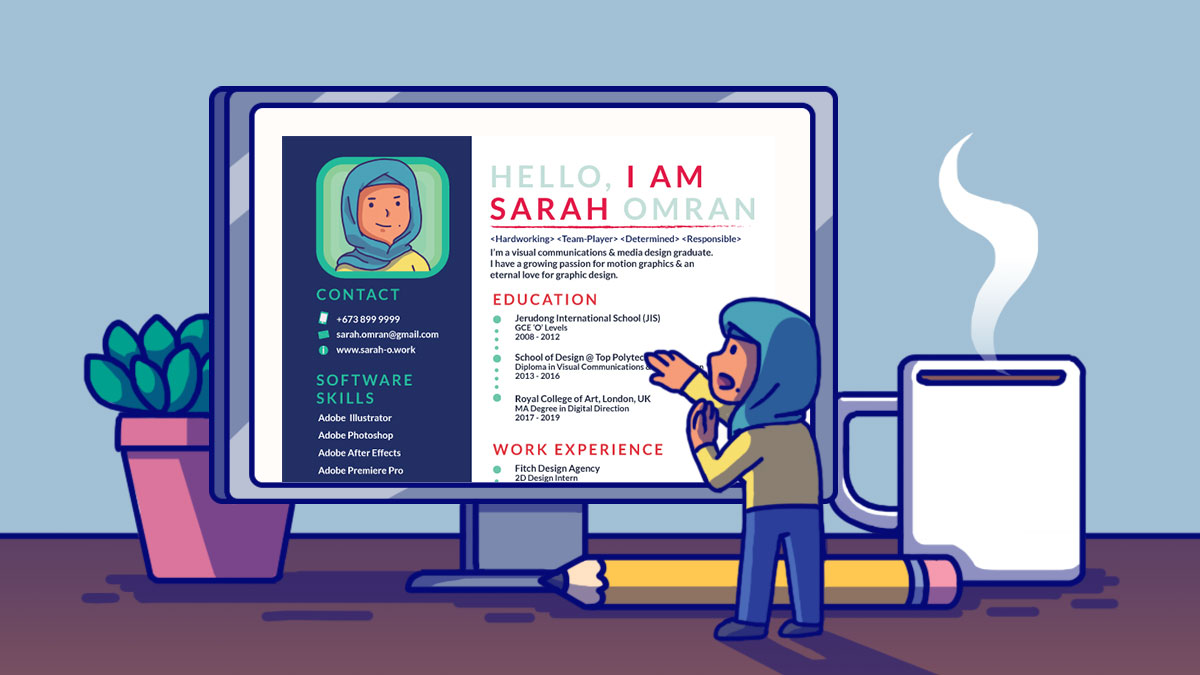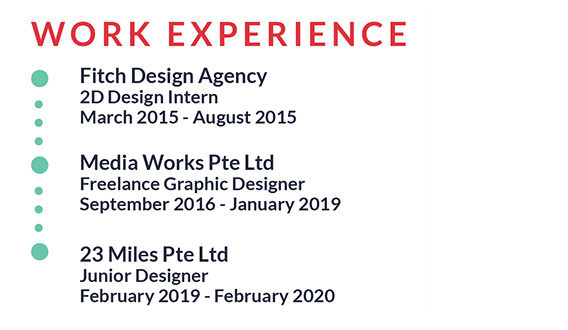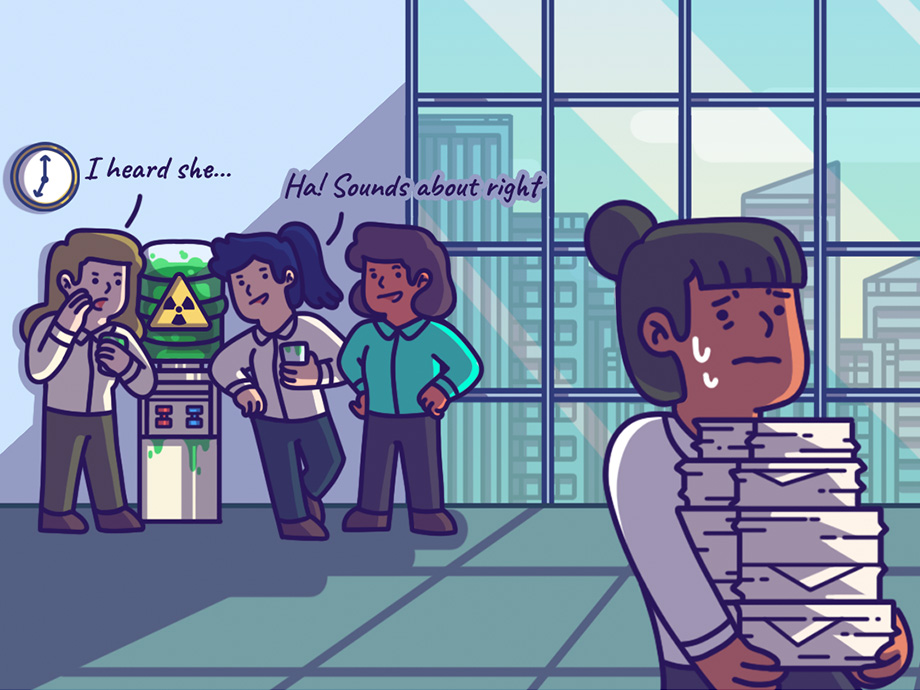Career & Education | Life | Article
How to Write a Good Resume to Land That Job
by The Simple Sum | 23 Mar 2021

Does your resume look anything like this?

… Then you might have scored an interview with us! Here’s what matters in a resume, aka CV aka curriculum vitae and why.
Now more than ever, it’s important to hammer away at your resume if you want to be top of the list for your dream job. Resumes are the one and opportunity for employers to get to know you and for you to level up, to get the interview.
What matters when you write a good resume?
Relevance and readability. In a nutshell, these are the essentials to focus on.
Relevance
Relevance is fairly straightforward – include what matters. If you’re a designer, your job working for Starbucks on their advertising matters. If you’re a designer, your job working for Starbucks as a barista doesn’t. Got it? Let’s move on.

Don’t be shy! If you’ve earned awards and had experiences that demonstrate you’re a star, particularly in a leadership capacity, then go ahead and include them. Volunteer work matters also!
Readability
This is critical. Employers — and recruiters — are going to look through a LOT of resumes before they single out the superstars. Your job is to stand out.
Readability means your resume is easy to read. Spacing, font size, how your information is organised, and the professionalism of your writing… all this counts.
A readable text – or a good resume like the one we’ve shown above – will have the following characteristics:
1. Sensible hierarchy of information
The most important information in your profile comes right at the top: work experience, education (if it’s relevant), and key skills. Tell your potential employer exactly what they’re going to get out of hiring you, and prioritise the right information so HR managers don’t tire themselves out scouring through your four-page resume.
2. Font and font size
If you’re gunning for maximum readability, serif fonts are a good choice because they lead the eye smoothly. Sans serif fonts work just as well, and have a more modern and sleek look to it that suit shorter pieces of text. Keep your font size at 12 throughout your resume.
3. Length of resume
Be concise and give your future employer what they want, not what you think might be interesting. Leave out emotional, abstract language and check your copy for unnecessarily long sentences. Trim your resume down to two pages maximum as a good starting point.
4. Formatting and white space
Margins and line spacings matter. Affording your reader white space on the page allows them the mental space to think and digest, thus making your resume more readable. Use digits when listing out numbers and stick to a consistent font size throughout.
But don’t just take it from us! We went to our HR team and had them give us the scoop!
The 5 do’s and don’ts of resume writing
Do!
1. Customise your resume EVERY time
Tailor the document for each position you apply for by highlighting your qualifications and expertise that match the specific job requirements. That will help the hiring manager to see you as the ideal candidate for the job.
2. Curate a summary statement
Curate a summary of yourself that proves you’re uniquely qualified to take on their job. Remember, this is your elevator pitch, so now’s your time to toot your horn! This statement enables you to highlight your skills and experience in a way that demonstrates value to the employer.
3. Keep your resume short
Hiring managers and recruiters may review hundreds of resumes for each opening. They prefer to know right away if someone is qualified for a job. Keep it to one to two pages and list what’s most important.
4. Highlight your achievements
When listing your past positions, give tangible examples of how the projects you worked on affected the company’s bottom line such as “Completion of major project within budget and ahead of schedule 31 January 2020”.
5. Focus on the employer’s needs
Go through your resume with a fine-tooth comb. Every detail should be used to show how you can meet the employer’s immediate and long-term needs. Reflect the language and words used in the job description for example. So, if the job description states “Experience in paid digital media planning”, state that, and don’t confuse people with something like, “Hands-on exposure to digital amplification”.
Don’t!
1. Lie about employment gaps
Many of us end up with employment gaps from time to time. Don’t make things up just to hide those gaps. If you can minimise them by using only the employment years, then do that. If the gaps are still there, however, be prepared to explain them during your interview.
2. Disclose confidential information
Avoid exposing yourself to potential conscious and unconscious bias on the part of the hiring manager. Don’t include information such as your birthday, NRIC number, marital status, gender, or religious affiliation, in your resume.
3. Be negative
Avoid negativity. Do not write negative things about previous employers, co-workers, or positions. Avoid words that have a negative connotation too. Keep your resume positive and upbeat.
4. Obsess over design elements
Do not drive yourself crazy obsessing about design elements. Use a good resume template as your guide and focus on the details that matter.
5. Forget to proofread
Small mistakes will cost you big time. If there is one thing that bugs hiring managers more than any other, it’s a failure to proofread. Always proofread your resume for content, grammar, spelling, and more.
Tools to build a good resume
There are plenty of tools out there – both paid and free – that make the resume-making experience seamless. The end result? A well-designed resume that’s easy on the eyes.
Here are some tools you can consider using:
- Canva (free of charge)
- Resume.io (paid)
- myPerfectresume (paid)
- ExpressCV (paid)
Follow these tips and you’ll vastly improve your chances of getting your foot in the door. Whether you’re fresh out of university and worried you’ll never get hired in this climate, or you’re a working professional looking to branch out into another position or field, it always starts with your resume. First impressions count!













